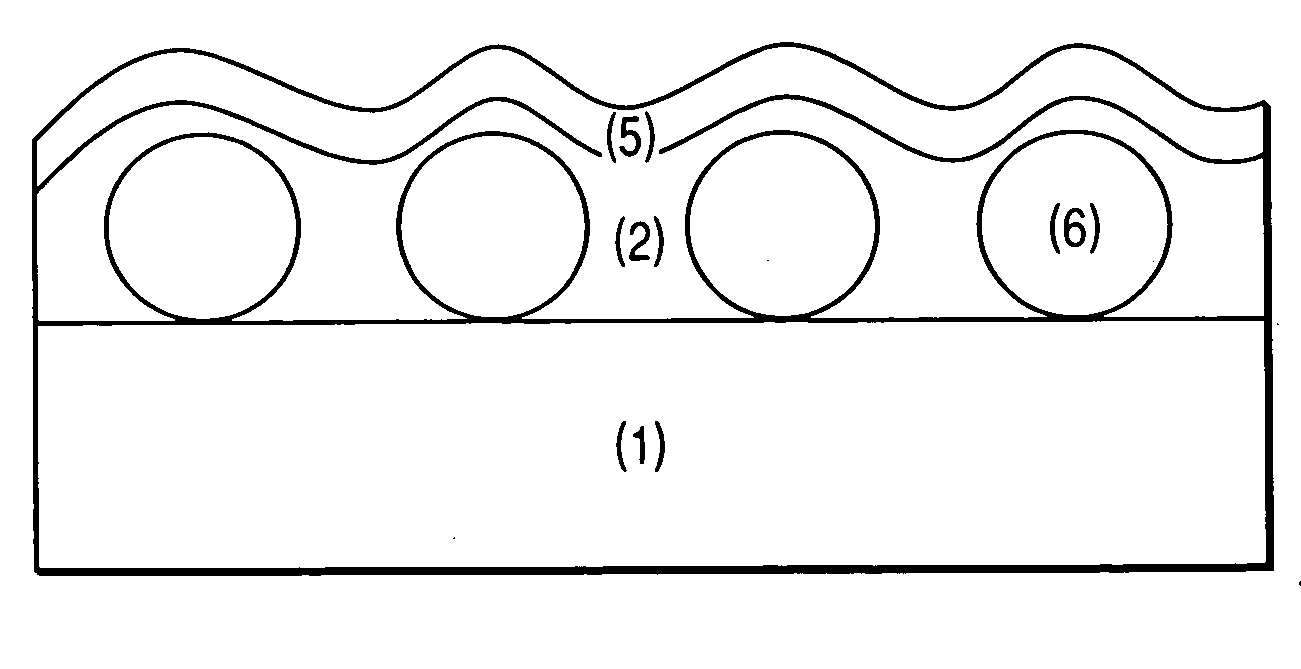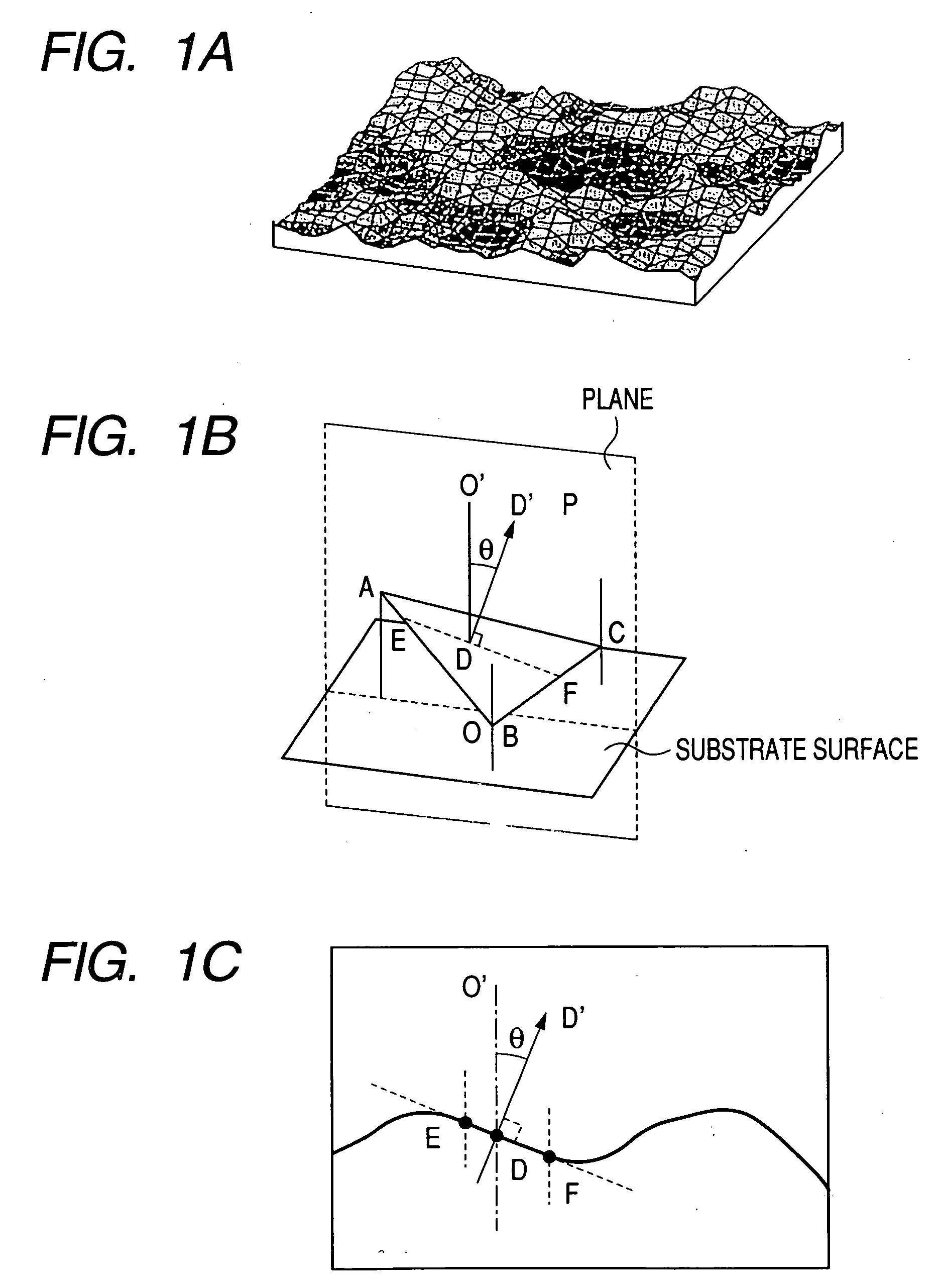Antiglare antireflective film, polarizing plate and liquid crystal display
a technology of anti-glare film and liquid crystal display, which is applied in the direction of optics, coatings, instruments, etc., can solve the problems of reducing the resolution of images, relieve the glare problem, and reduce the distance from viewers to the display, so as to improve image blur, improve the effect of anti-glare quality and high productivity
- Summary
- Abstract
- Description
- Claims
- Application Information
AI Technical Summary
Benefits of technology
Problems solved by technology
Method used
Image
Examples
example 1
(1) Coating of Antiglare Layer
[0656] A roll of 80-μm-thick triacetyl cellulose film (TAC-TD80U, produced by Fuji Photo Film Co., Ltd.) was wound off, and thereon the coating solution A for an antiglare layer was coated in accordance with the die coating method specified by the apparatus configuration as shown in FIGS. 5 to 8 and the coating conditions mentioned below. After the solvent was dried, the layer coated was further cured under a nitrogen-purged atmosphere by irradiation with ultraviolet rays from a 160 W / cm air-cooled metallic halide lamp (made by Eyegraphics Co., Ltd.) at an exposure of 90 mJ / cm2, thereby forming a 6-μm-thick antiglare layer having an antiglare quality, and then wound.
[0657] Basic conditions: The slot die 13 having an upstream-side lip land length IUP of 0.5 mm, a downstream-side lip land length ILO of 50 μm, a slot mouth 16a length of 150 μm in the web traveling direction and a slot 16 length of 50 mm was used. The gap between the upstream-side lip la...
example 2
(Making of Polarizing Plate)
[0684] An 80-μm-thick triacetyl cellulose film (TAC-TD80U, made by Fuji Photo Film Cp., Ltd.) having undergone 2-minute immersion in an aqueous solution containing 1.5 mol / L of NaOH at 55° C., neutralization and washing with water in sequence and each of the antiglare antireflective films made in Example 1 (Example 1F to Example 5F and Comparative Example 1F to Comparative Example 6F, which had already undergone the saponification treatment) were bonded to both sides of a polarizer formed by making polyvinyl alcohol adsorb iodine and stretching the resultant polyvinyl alcohol, and gave protection to the polarizer. The thus made polarizing plates were designated as Example 1P to Example 5P and Comparative Example 1P to Comparative Example 6P, respectively. Incidentally, each antiglare antireflective film was placed so that the triacetyl cellulose film thereof was bonded to the polarizer.
[0685] In addition, a polarizing plate was made using the foregoing...
example 3
(Evaluation of Polarizing Plate)
[0686] Part of the viewing-side polarizing plate mounted in a liquid crystal TV (LC20S4, made by Sharp Corporation) was peeled away, and in place of this plate each of the polarizing plates Example 1P to Example 5P and Comparative Example 1P to Comparative Example 6P made in Example 2 was stacked via an adhesive. Incidentally, each antiglare antireflective film was placed so as to form the viewing-side topmost surface of the liquid crystal TV. Evaluations of the following items were made on the displays thus obtained. Evaluation results are shown in Table 3.
(1) Image Blur
[0687] A sequence of 25 complex Min-cho type characters “” of ten-point size was displayed in ten lines on a white background of each of the LCD panels. These displayed characters were compared with those displayed on the LCD panel using the polarizing plate having no antiglare quality. The extent of blur of the character outline (image blur) was evaluated in accordance with the ...
PUM
| Property | Measurement | Unit |
|---|---|---|
| tilt angle | aaaaa | aaaaa |
| transparent | aaaaa | aaaaa |
| tilt angle | aaaaa | aaaaa |
Abstract
Description
Claims
Application Information
 Login to View More
Login to View More - R&D
- Intellectual Property
- Life Sciences
- Materials
- Tech Scout
- Unparalleled Data Quality
- Higher Quality Content
- 60% Fewer Hallucinations
Browse by: Latest US Patents, China's latest patents, Technical Efficacy Thesaurus, Application Domain, Technology Topic, Popular Technical Reports.
© 2025 PatSnap. All rights reserved.Legal|Privacy policy|Modern Slavery Act Transparency Statement|Sitemap|About US| Contact US: help@patsnap.com



